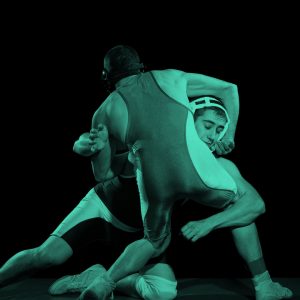Slang dictionary
kayfabe
[ key-feyb ]
What does kayfabe mean?
In professional wrestling, the term kayfabe refers to the practice of maintaining the illusion that everything is real—including the scripted personas, rivalries, and storylines.
This often extends beyond the in-match performance to other contexts, such as backstage footage and interviews.
The term is especially used in the phrases keep kayfabe (meaning to maintain the illusion) and break kayfabe (meaning to break the illusion).
These phrases can be applied to a person (to say a wrestler broke kayfabe means they broke character—stopped acting in the manner of their persona) or to other entities, such as a wrestling company, as in The WWE doesn’t even try to keep kayfabe in wrestling documentaries.
Kayfabe is also sometimes used as an adjective, as in His Twitter account is definitely not kayfabe.
The term kayfabe is also sometimes used outside of professional wrestling in contexts that involve maintaining an illusion of reality. However, the term is still closely associated with professional wrestling.
Example: The wrestlers won’t even break kayfabe when there’s an injury during a match.
Where does kayfabe come from?

The term kayfabe has been used in the context of professional wrestling since at least the 1980s. The exact origin of the term is unknown. It is often theorized that it originated in carnival jargon as a disguised slang variation of the word fake or the phrase be fake.
The term spread in the world of professional wrestling during the 1980s, when it was growing in popularity. At the time, maintaining the illusion of personas and rivalries often extended even to public appearances, such as interviews.
During the 1990s, the emphasis on maintaining kayfabe seemed to lessen. For example, World Wrestling Entertainment owner Vince McMahon broke kayfabe and compared professional wrestling to soap operas and sitcoms while discussing his own wrestling company during the 1990s.
The word kayfabe is now well-known among pro wrestling fans and has gained more mainstream use. In modern professional wrestling, wrestlers are much less likely to keep kayfabe in many contexts, especially when posting on social media.
In kayfabe, who is the best, most dominant wrestler of all time 🤔
— Brian Pillman Jr. (@FlyinBrianJr) April 21, 2018
Hey everyone in my mentions defending the honour of pro wrestling & Jim Cornette …. I never said wrestling was “FAKE”
And all these grizzled vets crying about it, pretty sure kayfabe died in the 90’s cuz of the dudes we all idolize
So leave us “disrespectful kids” alone 🤷♂️
— “All Ego” Ethan Page (@OfficialEGO) August 20, 2019
Examples of kayfabe
Who uses kayfabe?
Kayfabe is usually used in the context of professional wrestling, but it’s also sometimes extended to other contexts.
Seeing Chris Jericho giving an interview on ESPN that doesn't even try to be kayfabe just amazes me.
— Dave Buchanan (@FastTrack550) April 2, 2017
The HBO documentary about Andre the Giant is quite good and I’m stunned that Vince McMahon and Hulk Hogan just can’t 100% turn off the kayfabe part of themselves.
— Art from Friends at the Table (@atebbel) April 14, 2018
Hearing Undertaker explain in this new interview that he kept kayfabe alive with his character for so long because he wanted people to question if he was actually dead is the best.
— Ryan Satin (@ryansatin) February 28, 2019
Note
This is not meant to be a formal definition of kayfabe like most terms we define on Dictionary.com, but is rather an informal word summary that hopefully touches upon the key aspects of the meaning and usage of kayfabe that will help our users expand their word mastery.